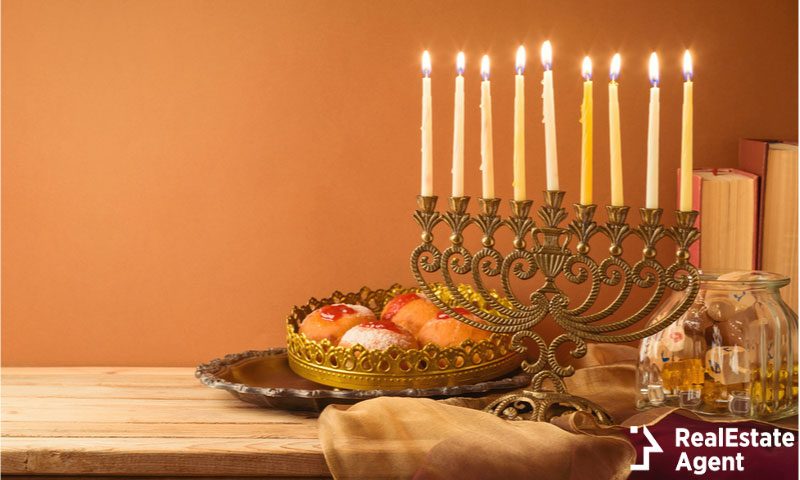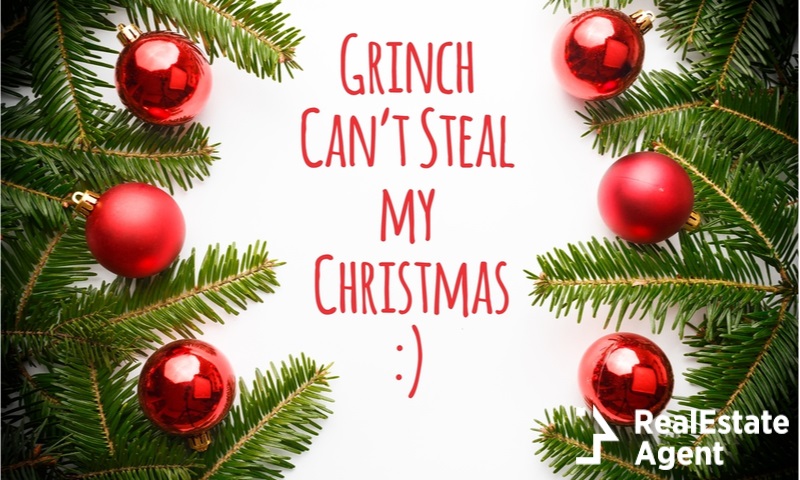With the winter holidays fast approaching, we decided to look back into one of the most popular winter holidays in the United States. As the nights are getting longer and we are traveling across the country to get closer to our families, this winter holiday season draws closer each day. We celebrate this season in many ways across the world. From small intimate gatherings with family to romantic getaways in the mountains or the coast. It is a season of joy and celebrations which allows individuals from different religious backgrounds to practice their beliefs and creeds.
While nowhere near as celebrated as Christmas Day, the best-known eight-day Jewish holiday known as Hanukkah is celebrated by 5% of the American population. The popularity Hanukkah has in the US has a fantastic story linked with our nation’s foundation, but in Judaism, it is considered a minor festival. However, Hanukkah is respected and celebrated as a memorable holiday for prayers and synagogue worship. Let’s see how the story of Hanukkah began and what made it evolve into the holiday we know today.
Back Story and History of Hanukkah
The story of Hanukkah began in 165 B.C. with the rededication of the ancient Temple in Jerusalem. At the time, Judea, known as the Land of Israel, was under Antiochus III’s control, the Syrian King. He allowed Jews to practice their religion in peace, but when his son, Antiochus IV, gained power, he was less benevolent with these habits. He wanted Jerusalem to worship Greek Gods. Thus he erected an altar to Zeus. Antiochus’s soldiers targeted the holy city of Jerusalem and left a massacre in their wake, also desecrating the city’s holy Second Temple. The Jews felt their beliefs were threatened.
The Jewish priest Mattathias started a large-scale rebellion against Antiochus and the monarchy. He was followed by his five sons known as the Maccabees. Mattathias’s son, Judah Maccabee, took over after his father died. Two years later, the Jews were celebrating their independence from Syrian rule. Judah led his followers towards cleansing the Second Temple, rebuilding its altar, and lighting its menorah.
The seven-branched gold candelabrum was meant to burn every night for eight nights. They discovered that the Temple’s large oil lamps only had enough untainted olive oil to last for one night during the rededication. This did not matter, however, because those attending witnessed the Hanukkah Miracle. The untainted olive oil was meant to only last one night. The flames, however, did not falter for eight nights, giving them plenty of time to find supplies. This inspired the eight-day festival.
Hanukkah Celebrations in America
We already mentioned the holiday’s popularity in America, despite its decreased importance in Judaism. Still, how did it get to be as widely celebrated in the US? I mean, while only 38% of Israeli Jews consider Hanukkah as one of the most important three Jewish holidays, 68% of American Jews place it in the top three. Hanukkah, at its roots, is a story about the fight for freedom from oppression and the Menorah miracle that followed. However, in America, the holiday is widespread due to our nation’s founding principles. In 1790, George Washington responded to the Hebrew congregation of Newport, Rhode Island. He underlined the religious freedom granted by its founding principles. Still, only in 1979 was the first menorah erected on the White House Ellipse.
Even so, being Jewish wasn’t always easy in America. Before the late 19th century, there were around 250,000 Jews in America in 1880. It wasn’t easy to find essential goods for the Jewish religious life. It was difficult to celebrate even the most important Jewish holidays, and teachers guided Jewish schoolchildren towards becoming Christian and forsaking their religion. The Jewish community in the US didn’t accept this course of events, and they strived to be left alone to celebrate their faith. Local churches adapted special Christmas events for their own congregation where Jews could learn the Hanukkah’s story, blessings, and hymns of their religion and worship in peace. Rabbies Lilienthal and Wise emphasized the rabbi’s role as a teacher to his congregation. They understood their role in Judaism’s modern age in America and called themselves “Modern Maccabees”.
Modern Age Hanukkah in America
With American industrialization on the rise, Americans from all specks of life, including Jews, had disposable incomes. But still, there was a limited market for essential goods of the Jewish religious life. This modest supply was increased as small manufacturers responded to the demand. In 1919, the best flour for latkes was promoted by Aunt Jemima, nowadays known as Pearl Milling Company. The cottage industry supplied paper dreidels for American Jews who wanted to decorate their homes. American consumerism didn’t only speak English. When the Jews demanded it, it also spoke Yiddish. The country’s freedom of economics and religion allows the Jewish communities to prosper. Now, almost 2.3 million Jewish immigrants came to the US between 1881 and 1924. For them, Hanukkah gifts signify their Americanization but continuous respect for their holiday. Giving those gifts at Hanukkah doesn’t mean that they are adopting Christmas. They are simply expressing their own ideals granted by the American freedom of religion. At the same time, they celebrate their dedication to Judaism.
Between the 1950s and 1980s, parents argued for their rights again. The suburbanization of Jewish communities came due to World War II. During this time, their children were forced to participate in Christmas celebrations. They had to sing Christmas carols, and at schools, teachers promoted the Christian faith. Parents expanded the Hanukkah festivities with help from the community. Rabbinical associations and national Jewish clubs promoted the Jewish celebrations. Nowadays, the eight-days Hanukkah festivities are celebrated with decorations, holiday parties, and nightly gifts.
Through its history and development, Hanukkah celebrations in America accomplish many tasks. Around 7 million Jews can practice their beliefs on US soil in the 21st century. Between November 28th and December 6th, Jews are reminded through Hanukkah of the Jewish dedication.
Decorations and Traditions of Hanukkah
Christians are used to Christmas Trees, stockings, mistletoe, and Christmas lights. American Jews have other traditions and decorations to celebrate. The central focus of any Jewish family during the Hanukkah festivities is the nine-branched menorah. Also known as hanukiah in Hebrew, the modern-day menorah has nine not seven branches. On each of the eight nights of Hanukkah, a candle is placed on the menorah after sunset. The ninth candle gives light to the others and is known as “the shamash” (the helper). Usually, Jews recite blessings and display the menorah in a window during this ritual. This is done to remind others of the miracle that gave birth to the holiday.
Another tradition is related to food. Traditional Hanukkah foods are fried in oil. Anything from potato pancakes to jam-filled donuts are popular in Jewish households. Customs like gift exchanging and playing with a four-sided spinning top, also known as dreidels, are common. The last decades transformed the Hanukkah holiday into a significant commercial phenomenon. This happened probably because it overlaps Christmas most of the time. Still, given minor religious importance, there are no restrictions placed on school attendance, work schedules, or other activities. It is an essential domestic holiday that enhances Jewish family life traditions. Its similarity to Christmas’s gift-giving makes Judaism more attracted to children. This, in turn, makes it more relatable for neighbors and friends of Jewish children. Its primary significance in America can be linked to interfaith families sharing the celebrations and furthering domestic tranquility.
Conclusion
The days are drawing closer, amidst another Pandemic riddled year, to celebrate the holiday season. Jews and every other religious group should reflect on the country’s foundation. Freedom! Whether you celebrate Christmas, Hanukkah, or both, both holidays have their own traditions and stories. Still, both are based on the right to celebrate a moment of togetherness, liberty, and joy. While history pitted many religions against each other, they all promote the same ideals of love. Their celebrations gather families from all across the nation. They give us the moments we need to focus on the most important things in our lives—the people we have around us.
Our country’s history is rich, intricate, and tumultuous, but to describe it in one word, we’d have to say, it’s a story of struggle. The fight for freedom took many forms on US soil and is still ongoing. These 2021 holidays should bring forth the miracles that gave birth to them. After a year like 2021, we should be reminded of the joy of living. We wish you a Happy Hanukkah and may your candles burn bright this season as you are surrounded by our families and loved ones.
In the comments below, let us know what winter celebration you will enjoy with your family to wrap up another Pandemic affected year. Like & Share this article with friends and family that you wish to be by your side during this holiday season.












